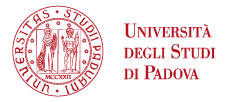The biomechanics of traumatic brain injury and its use in the design of protective helmets
24.05.2016
Seminario che il Dr. Mazdak Ghajari dell'Imperial College di Londra terrà
il 24 maggio presso l'Aula M7 (ex-DIM), via Venezia 1, alle ore 14.15
Abstract
Traumatic brain injury (TBI) is a leading cause of death and disability, with a total yearly cost of £5b in the UK. It often occurs when the head undergoes large inertial loading, e.g. in road traffic accidents, falls or collisions in sports, leading to brain deformation, which damages nerves, axons and blood vessels. The relationship between the initial inertial loading and the pattern of brain damage is poorly understood, but this is key to enhancing protection strategies, such as refined helmet designs.The speaker will introduce the interdisciplinary TBI research at Imperial College London. Then he will describe a high fidelity computational model of TBI biomechanics developed to study the relationship between brain deformation at the time of injury and brain tissue damage. He will show that this model can successfully predict the location of pathology seen in a neurodegenerative disease, chronic traumatic encephalopathy (CTE), caused by recurrent TBI in a sporting and military context. He will also present evidence from a complementary analysis of human neuroimaging that also demonstrates high levels of tissue damage in sites of CTE pathology. In the second part of the talk, the speaker will present his work on the design of helmet liners for improved survivability and show some promising results, particularly in relation to the mitigation of CTE.
Short CV
Dr Mazdak Ghajari is a lecturer in computer-aided engineering in the Dyson School of Design Engineering at Imperial College London. He enjoys developing predictive computational models, such as a mesh-free peridynamic model for the fracture analysis of polycrystalline ceramics and a high fidelity finite element model of traumatic brain injury. Mazdak has done extensive work on head protection. His PhD work on improving the fidelity of the impact attenuation test method of helmet standards won him the young researcher award of the international research council of biomechanics of injury. In 2013, he was awarded an Imperial College junior research fellowship to further develop his research in the areas of biomechanics and mitigation of traumatic brain injury. Mazdak is a member of the Imperial Neurotrauma Centre, BSI (head protection committee) and COST Action TU1407 (scientific and technical innovations for powered two wheelers), and an associate member of Centre for Blast Injury Studies.





